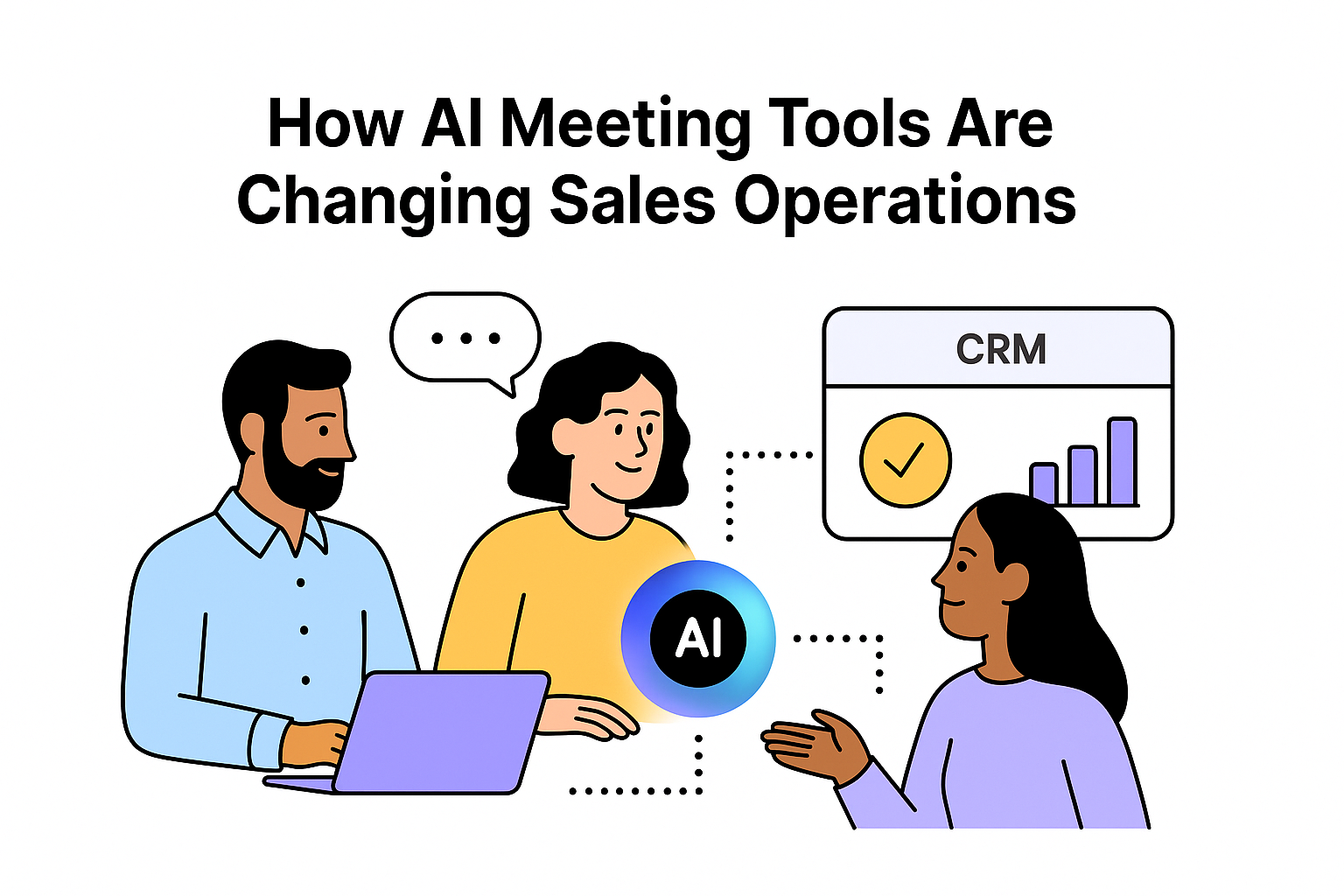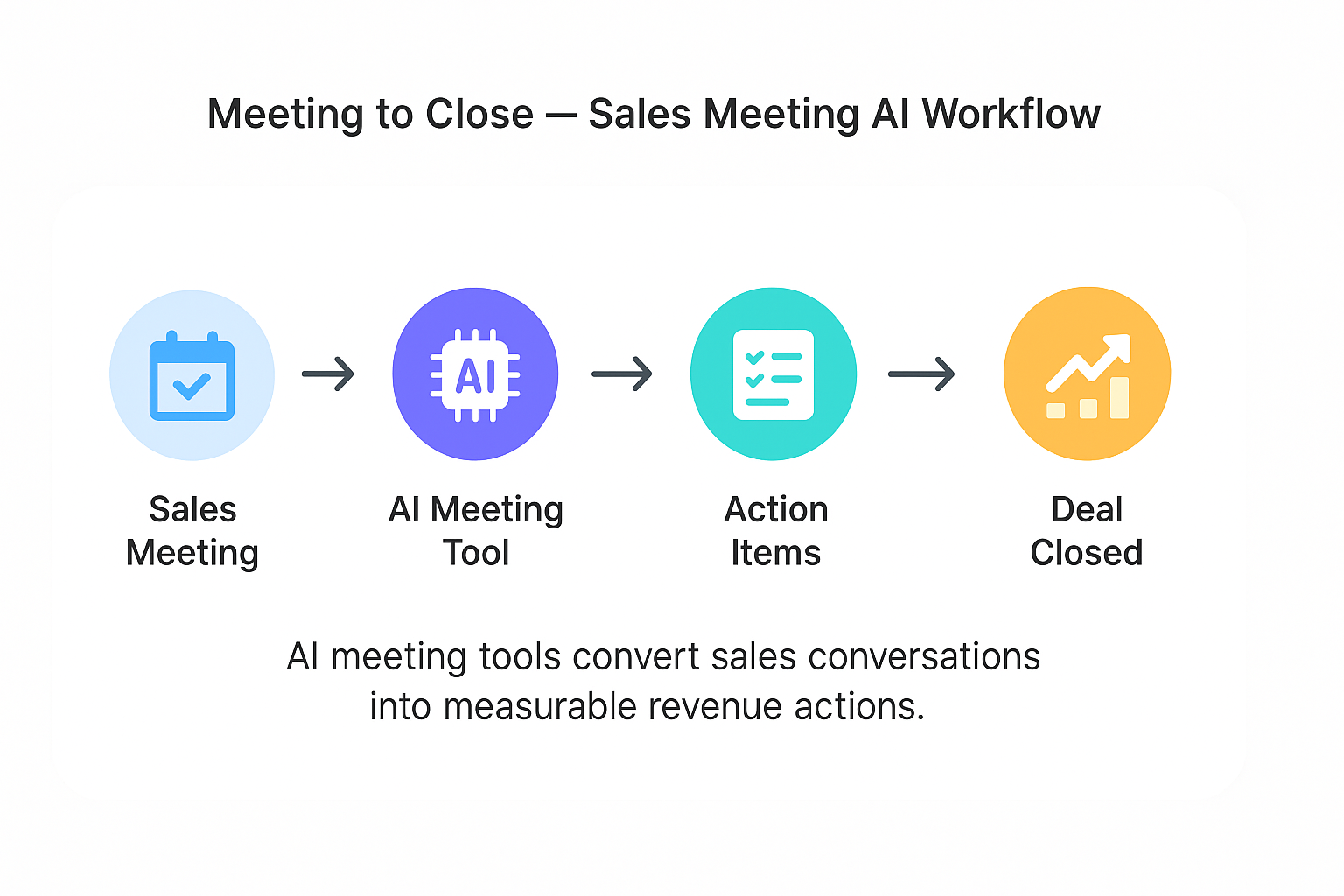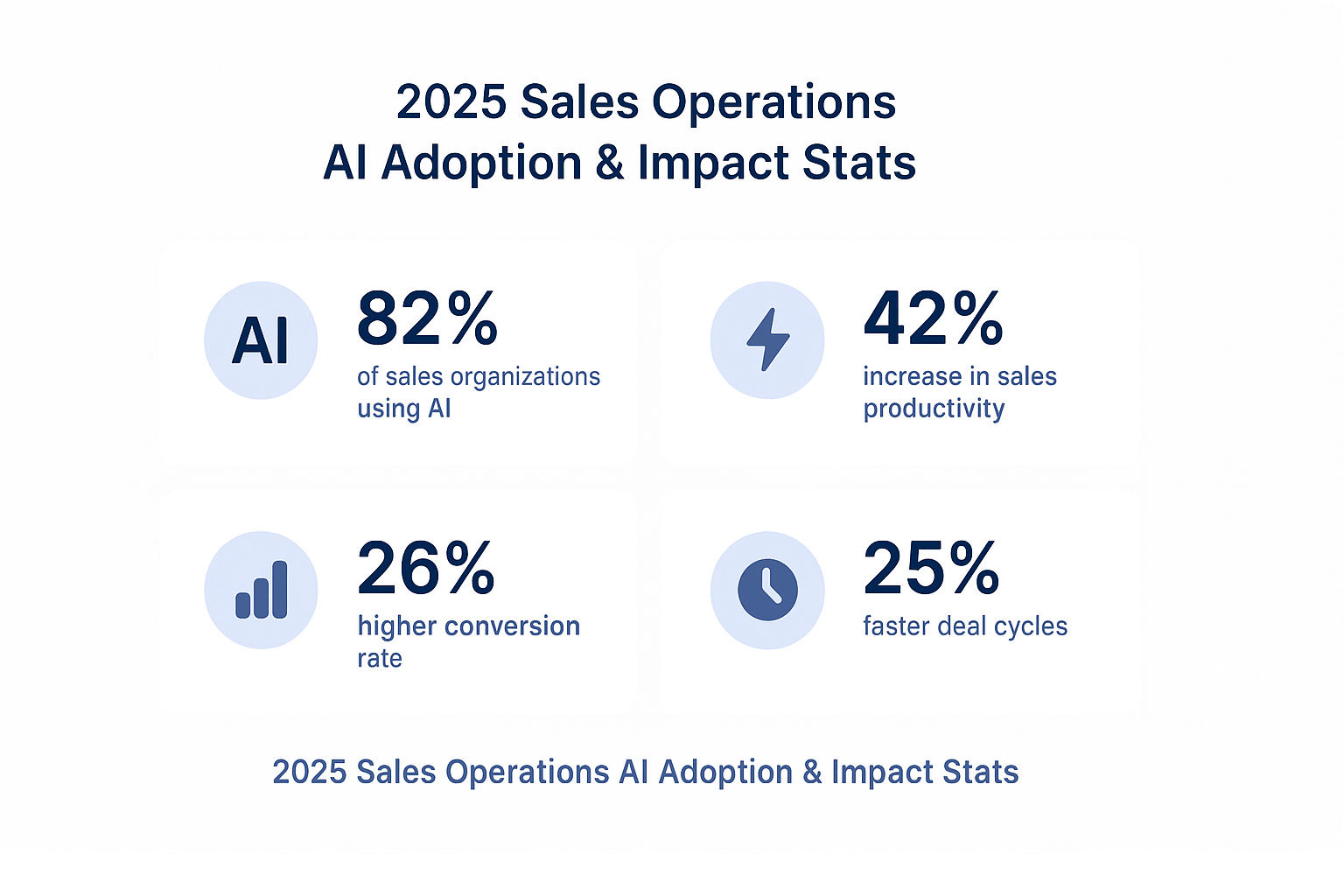 Sami AZ
Sami AZ
Sales operations have always been about precision and speed. But in 2025, the world of sales is transforming faster than ever. Meetings, once considered a static part of the process, have become one of the most data-rich and automatable moments in the sales cycle.
Artificial intelligence is not just listening to meetings anymore. It is acting on them. AI meeting tools now capture, analyze, and automate follow-ups across CRMs, giving sales teams back the time they used to lose on repetitive tasks. For sales operations leaders, these tools are no longer optional, they are the backbone of modern productivity.
In this article, we will explore how AI meeting tools are changing sales operations, how Klu fits into the new workflow, and how to design a tech stack that actually delivers measurable sales performance.
Sales meetings are the heartbeat of any revenue organization. They drive pipeline decisions, customer relationships, and forecast accuracy. But for every productive conversation, there are hours of lost time. Manual note-taking, scattered follow-ups, and missed CRM updates all drain operational efficiency.
A typical sales representative spends over 20 percent of their time preparing for and summarizing meetings. When multiplied across dozens of reps, this time loss compounds into thousands of unproductive hours each quarter. The root cause is simple: meetings are information-heavy but action-light.
Without automation, sales operations teams rely on individuals to remember, record, and distribute insights manually. That means opportunities are often lost between conversations and systems.
To understand how smarter automation can remove this friction, read Smarter Meetings in 2025, which explains how AI reshapes communication and collaboration for better team performance.
AI meeting tools have evolved from transcription apps into intelligent sales copilots. They now summarize key moments, extract customer intent, and automatically populate CRM fields. For sales operations, this changes everything.
Instead of relying on manual updates, AI meeting tools generate actionable data the moment a meeting ends. Tasks, next steps, and follow-ups are identified automatically and synced with Salesforce, HubSpot, or other CRMs.
In 2025, the top-performing sales organizations are those that use meeting intelligence to power deal execution. AI does not replace the human salesperson, it multiplies their capacity to close.
When follow-ups happen automatically, deals move faster. Sales reps no longer forget to send recap emails or update CRM records. Operations teams gain visibility into every meeting outcome, ensuring that the entire pipeline is accurate in real time.
For example, when AI detects a client commitment during a meeting, it can automatically create a task in the CRM with the owner and deadline. This shortens the lag between conversation and execution and makes pipeline forecasting more reliable.

Sales operations teams often struggle with lead hand-off accuracy. Notes from discovery calls are inconsistent, and data quality suffers. AI meeting tools standardize how information flows into the CRM. Every call is automatically transcribed, tagged, and structured. This ensures that marketing, sales, and customer success teams operate from the same data foundation.
As a result, fewer leads fall through the cracks. Sales ops teams spend less time fixing data errors and more time optimizing workflows.
The ROI of AI meeting tools is easy to measure. Teams report shorter deal cycles, higher conversion rates, and improved forecast accuracy. Automation reduces administrative work, freeing sales reps to focus on selling. In many organizations, the introduction of AI meeting automation has led to 20 to 30 percent more deals closed per quarter.
When integrated with existing productivity systems, the impact compounds across departments. For a deeper look at how integrated stacks work, explore The Rise of the AI Productivity Stack (and Where Klu Fits In).
Sales operations leaders are increasingly acting as architects of automation. Instead of only managing data hygiene and reporting, they now design how information moves through the sales funnel. AI meeting tools are at the center of that architecture.
This new responsibility comes with new opportunities. Sales ops can now track metrics that were invisible before, such as “actions per meeting,” “commitment ratio,” and “decision velocity.” These analytics show not just how many meetings are happening, but how effective they are.
The sales stack is shifting from reactive data entry to proactive intelligence. When meetings automatically generate structured data, the role of sales ops becomes more strategic.
Klu was designed for this exact transformation. It connects meetings, CRMs, and communication tools into one continuous workflow that turns conversation into action.
Here is how Klu enhances every stage of the sales process:
Klu eliminates the manual gaps that slow sales operations down. Instead of relying on sales reps to remember what was discussed, Klu ensures that every insight and commitment is recorded, assigned, and tracked.
This not only improves sales velocity but also builds accountability. When every meeting produces structured data, sales leaders can forecast more accurately, identify pipeline bottlenecks, and coach their teams with real-time insights.

Deploying AI meeting tools effectively requires more than just software. It requires process design and adoption alignment. Here is a step-by-step approach:
For a detailed approach to implementing automation at scale, read Productivity Automation: How AI Saves Teams 10+ Hours Weekly. It outlines the key steps to deploy automation in a way that sticks.
Companies that have implemented AI meeting tools report measurable improvements in nearly every key metric.
AI meeting tools also improve customer experience. Clients receive faster responses, fewer dropped hand-offs, and consistent communication from the entire team.
By 2026, AI meeting tools will become standard in every enterprise sales organization. What started as a convenience feature is now a strategic advantage. Sales ops leaders who fail to integrate AI into their meeting workflows will find their teams lagging in both efficiency and insight.
The next frontier is predictive automation. AI systems will not only capture and assign tasks but also anticipate potential deal risks or engagement gaps. Combined with data from CRMs, this predictive layer will allow sales ops to prioritize the most promising opportunities before competitors do.
The future is not about replacing salespeople, it is about empowering them. AI amplifies human ability by removing the noise that slows down execution.
What are AI meeting tools?
AI meeting tools capture, analyze, and automate insights from meetings. They identify action items, update CRMs, and generate analytics for sales operations.
How do they benefit sales operations?
They eliminate manual data entry, improve forecasting accuracy, and ensure consistent follow-ups. This leads to faster deal cycles and better revenue predictability.
Can AI meeting tools integrate with CRMs?
Yes. Modern AI tools connect directly with Salesforce, HubSpot, and other CRMs, ensuring that data from every meeting flows into your sales system automatically.
Is AI replacing sales teams?
No. AI enhances human sales performance by handling repetitive work and surfacing insights. It empowers teams to focus on relationship building and strategy.
Why should sales ops choose Klu?
Klu sits across the entire productivity stack, capturing meetings, generating insights, and automating CRM updates. It transforms meetings into measurable outcomes and drives real sales efficiency.
AI meeting tools are transforming sales operations into data-driven, proactive systems. They remove manual effort, improve visibility, and connect the dots between meetings and revenue.
For sales ops leaders, this shift is not a question of if but when. Those who implement automation now will build faster pipelines, stronger forecasts, and more agile teams.
Klu is built for that transformation. It automates the sales meeting lifecycle from capture to action, integrates directly with your CRM, and gives your team insights that drive measurable results.
Start turning your meetings into closed deals! Get started with Klu today.